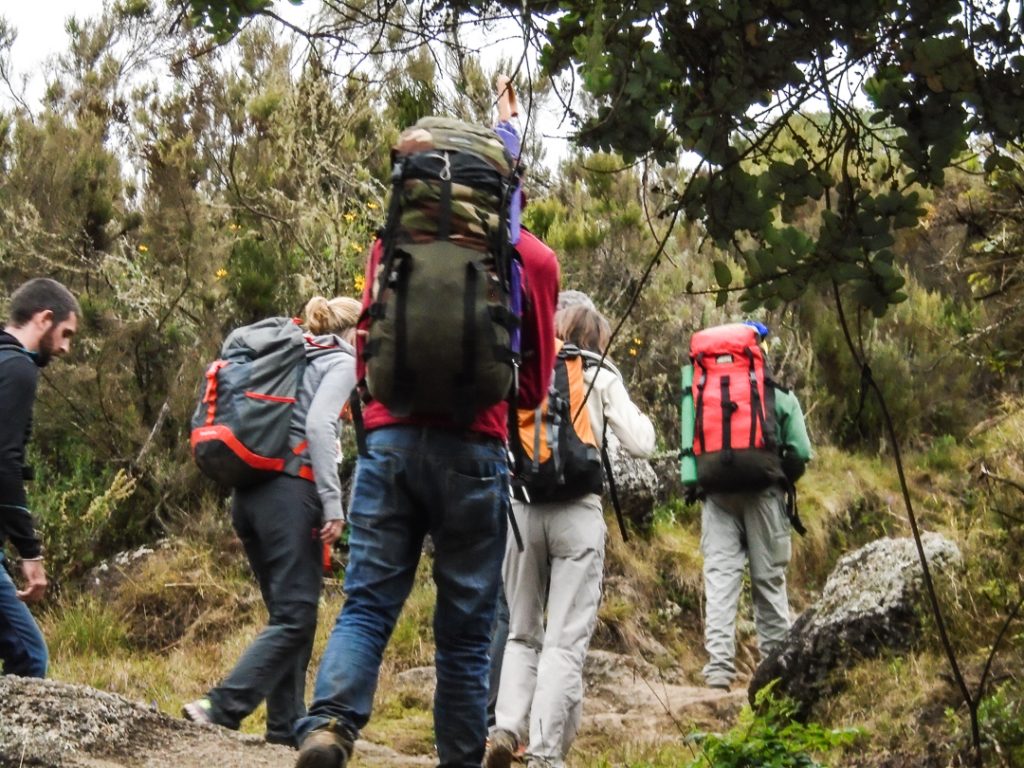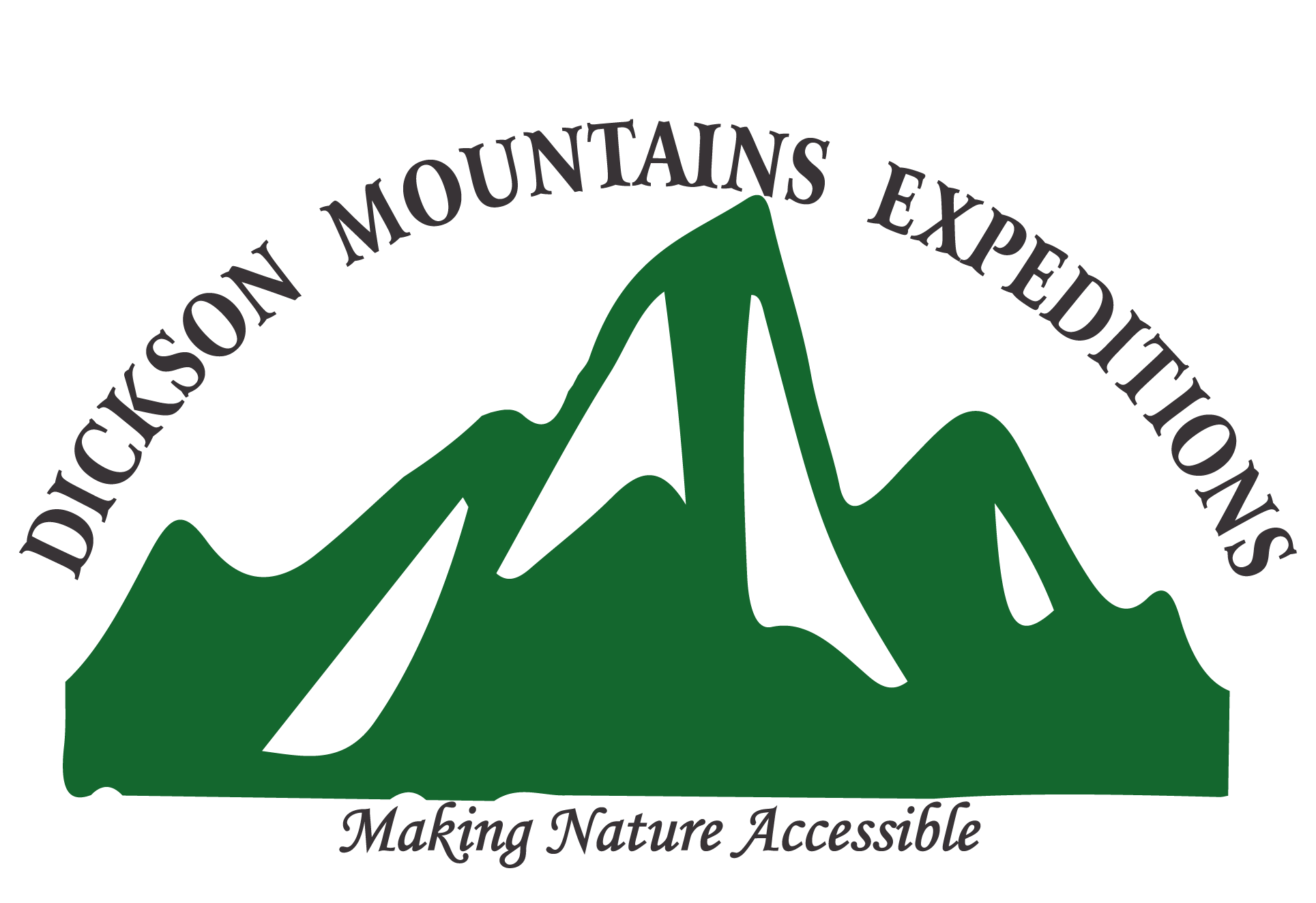It is one thing to think about conquering the heights and a whole other dimension to actually get ready for a mountain climbing trip. Don’t be caught off guard, on top of world’s summits, realizing you’ve just forgot a handkerchief… Like seriously! Here’s a list of important things to bring on your next climbing trip.
For the head and face
Pile or Wool hat: Bring one that covers ears — a balaclava type is excellent.
Shade Hat: Visor hats with good brims are essential for protection from the equatorial sun.
Sunglasses: Essential for eye protection in the tropics and at altitude. Bring a good quality pair, preferably with an IREX protection rating of 100. Attachable side shields are necessary, or bring glacier glasses.
Sunscreen: Bring plenty of complete sun block with a sun protection factor (SPF) of 15 or more. Unless you have spent time in equatorial sun you will probably underestimate the amount necessary, so bring lots. Sunscreen is difficult to find in Tanzania.
Lip Balm: With SPF rating of 15 or higher.
Bandanas: Tied around the neck, they give good sun protection. Can also be used for cleaning glasses, as wash cloths, etc. They dry very quickly.

For the upper body
T- Shirts: Two T- shirts that you don¹t mind getting dirty while on the mountain. Synthetic is best — no cotton on summit day.
Upper Body Layers: For climbing the mountain we recommend you have three warm layers for the upper body. Items must be made of wool, synthetic or pile. Make sure all layers fit comfortably over each other and supply good insulation. A good combination is a long underwear top, a sweater, and a pile jacket or heavy wool shirt. Cotton items do not provide adequate insulation and are completely
useless when damp.
Rain Parka: Afternoon showers are common in East Africa, especially on the mountain. Bring a good parka of Gore- Tex or waterproof nylon that has been “seam sealed”.
Wind Shirt: (optional if you have Gore- Tex rain gear) A nylon wind shell (not waterproof), roomy enough to fit comfortably over all upper body layers. Gore- Tex is good for both this wind shirt and for the rain coat.
Poncho: (Optional) Quick and handy protection for body and rucksack. Poor protection in windy rain.
Gloves or Mittens: Wool or pile. One pair of heavy mittens and a light pair of gloves work well.
Mitten Shells: One pair to go over your mittens. These are for use against the winds sometimes encountered in the crater and on the way to the summit.
For the legs
Quick Dry Hiking Shorts: 1 pair. Good for hiking at lower elevations on the mountain.
Long Underwear Bottoms: One pair. Wool or synthetic.
Wool, Bunting or Pile Pants: One pair that fit loosely and is comfortable. These are essential to be worn over the long john bottoms.
Rain Pants: Bring a good pair of rain pants of Gore- Tex or waterproof nylon that has been “seam sealed”.
Wind Pants: (optional if you have Gore- Tex rain pants.) One pair. These are used often on the mountain for protection against wind. They should be breathable nylon and roomy enough to fit comfortably over wool or pile pants.
Tights: Lycra types are best. These are comfortable to hike in, help prevent nettle stings, provide good warmth on cool misty days, dry fast and prevent sunburn.
Undergarments: Enough for the duration of the trek.
For the feet
Thin Socks: Two pair of synthetic socks to wear under heavy wool socks. These help prevent blisters and keep feet dry.
Thick Socks: Six pair of heavy wool or synthetic socks to wear for warmth with hiking boots.
Hiking Boots: One pair medium weight hiking boots large enough to be comfortable with one liner sock and one heavy wool or synthetic sock.
Gaiters: One pair of either high or low gaiters made of breathable material to keep dirt and snow out of your boots.
Tevas, Sandles: These are to wear in camp after a day of hiking.
For sleeping
Sleeping Bag and Stuff Sac: On the mountain temperatures can get down to zero degrees Fahrenheit at night so bring a warm bag.
Sleeping pad: A closed cell foam camping mattress is OK. An inflatable Thermal Rest type is more comfortable.
FOR DRINKING:
Water Bottle: Two, one liter wide- mouthed plastic bottles.
Water Treatment: This is very important. The water in East Africa is not unhealthy although its flora content is different from what you are used to. To keep your system running normally we recommend you bring two bottles of “Potable Aqua” or “Polar Pure”, crystal iodine in a bottle, to treat drinking water. Filtration pumps are also effective, but costly and rather bulky.
Water Flavoring: Wyle’s lemonade, Tang, Gatorade, etc. These mixes are hard to come by in Tanzania and make treated water taste much better. Double bag these.
For carrying your gear
Frameless Pack: A medium size comfortable pack is adequate to carry personal gear. The pack should fit properly and have a good waist belt. Side pockets are recommended for soft packs. Personal loads with camera gear, water for the day and warm clothes are often between 18 and 25 pounds.
Pack Cover: Something waterproof to cover your pack when hiking in the rain. Otherwise bring a large plastic bag to line the inside.
Duffle Bag: Medium size with lock for mountain gear. This will go into our mountain bag that the porters will carry.
Duffle Bag: Large enough to hold your non- mountain gear. This will meet you at the hotel after the climb.
Plastic Bags: Several, to double bag your sleeping bag and clothes on the mountain. It can rain every afternoon.
For Personal health and comfort
Toiletries: Bring enough for entire trip. Keep simple and light. Few toiletries are available in Tanzania, however, so bring enough for all your needs.
Ear Plugs: To block out snoring and hut noise, to insure peaceful rest.
Flashlight and/or Headlamp: Important on summit day and just plain handy in camp. Plenty of batteries.
Pocket Knife: Simple Swiss Army type with scissors.
Personal First Aid and drug Kit: Please see recommended list below.
Trail Munchies: Although plenty of snack food is provided, trekkers like that taste of home in their pack. Touted as an important accessory by those who have brought them in the past!
Hot Drink Mixes: We will provide plenty of coffee, cocoa and tea, but non- caffeinated drinks are not readily available here. Bring a supply of your favorite herbal teas.
Towel: For washing up in camp, a small one is fine, or you can use a bandana.
Towelettes: Such as “Wash’n’Dries” for general hygiene.
Spare Glasses: For contact wearers in dusty conditions and any eyeglass wearer while on vacation.
Umbrella: Very useful against rain and sun. Most guides use one
